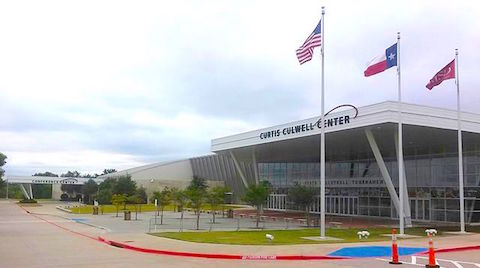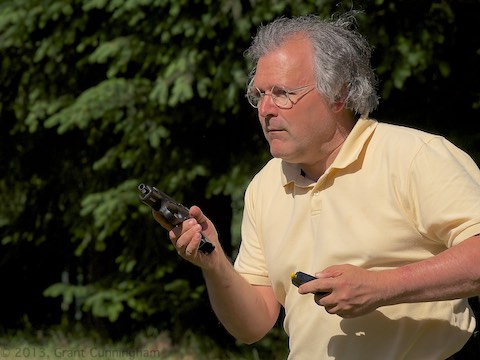
What can a foiled terrorist attack teach us about defensive planning?
By now you’ve no doubt heard about the tragic incident in Garland, Texas. For those who missed it, on Sunday a “Draw Mohammed” Cartoon show was held in that town; contestants vied for the best cartoon in celebration of free speech. There were speakers who are active in the free speech movement, including a Dutch citizen who has earned a spot on an al Qaeda hit list.
Two men — one of whom since identified by the FBI as having been on a watch list for several years — drove up to the event center and, armed with rifles and what police are identifying as “body armor”, started shooting at the security officers. One officer returned fire and killed both men. One security officer suffered minor injuries. ISIS has since claimed responsibility.
Naturally the Second Amendment fraternity has been elated over the defeat of a terrorist plot, posting cartoons and quips on social media about the incident. Credit is being given to the police officer, but people are also comparing the incident to the Charlie Hebdo tragedy in Paris and gleefully pointing out that the difference was in the arming of our police — and, by extension, the arming of the American populace as a whole.
Now don’t get me wrong; I’m quite happy these two terrorists were stopped and honestly shed not a tear at their demise. That might make me sound cold-hearted, but I don’t feel at all bad when mass murderers (regardless of color, creed, sex or ethnicity) meet their untimely end.
At the same time, there is something we need to learn from this event, and it’s not that American firepower saved the day. It’s about the differences of being prepared for various kinds of events.
The comparison to the French incident is quite overblown and, in my mind, completely inappropriate. In the Garland case the event was of specific duration, in a specific space with well delineated access points, and was of a nature such that any attack would need to be confined to a relatively narrow window of time and location. Sufficient security could easily be brought in for the event without significant financial or logistical issues.
Compare that to the Charlie Hebdo incident: that attack happened during the day-to-day activities at an outspoken publication. This was an organization that had for years been threatened and had lived with month after month of monotonous existence until that one day when they were surprised. Yes, the unarmed police who initially responded didn’t help much, but the incident was successful largely because the victims had been lulled into a state of non-expectancy; they didn’t know when or even if they’d be attacked, but only had a vague notion that they were in danger due to a longstanding vendetta against them.
They could have been attacked at their offices, in their homes, or even at a company party, today or ten years from now, and maintaining sufficient security to physically repel such an attack isn’t easy (or even possible, in most cases) over that kind of time span.
In simple terms, the Charlie Hebdo situation was open-ended, while the one in Garland was very definitely closed.
The reality is that it’s relatively easy to mount a strong defense when you don’t have to do it for very long. You don’t get tired, you don’t get complacent, and you don’t spend every last dime keeping that strong defense active. If you knew, for instance, that you’d be attacked tomorrow morning at 10:35, it wouldn’t be a difficult thing for the police to surround the area and nab your attacker.
Now try that with “sometime during my life I might be attacked” and see how easy it is to get the cops (or anyone else) to sit outside your door. Big difference, isn’t it?
Charlie Hebdo is closer to the kind of situation that you and I face. We don’t know if we’re going to be attacked, let alone when or where, and so we have to maintain a defensive posture for a very long time. We can certainly make some educated guesses — there are some activities and some locations where it’s statistically more likely that we might be attacked — but overall we’re forced to erect a defense that may never be used. It’s tiring, it’s costly, and frankly it’s just a lot of work!
That’s why you need to do defensive things that fit into your life, your budget, your interest and your energy levels. It’s easy to be gung-ho for a while and then move onto something more interesting, but your safety and that of your family really hinges on being able to access those skills and tools at any time. A good class or two and regular practice over a period of decades beats taking a whole bunch of classes in a very short time period and neglecting those skills because they’re too much work to maintain (or because you learned so many different things you don’t know what you should be practicing.) I see a lot of the latter in my classes, and not nearly enough of the former.
You may never use them, but your preparations need to be of the sort that you can keep up for many years. Sprinting is cool, but personal and family defense is a marathon.
Learn to be a marathoner.
-=[ Grant Cunningham ]=-
- Posted by Grant Cunningham
- On May 5, 2015


